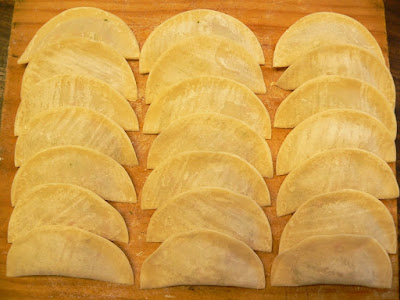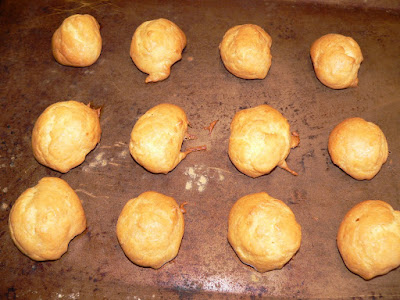
Last night was the Tasmanian Symphony Orchestra Gala Ball. The food was good. Cured Bothwell lamb loin, Woody Island oysters, Huon mushrooms, Macquarie Harbour ocean trout and NW Tasmanian grain fed beef with local asparagus. The dessert - native Blue Gum honey panna cotta and Cygnet Granny Smith apple sorbet. Tonight we felt like something simple. Any wonder! We settled on what was in the fridge because neither Mary nor I felt like going shopping. Egg and chips it was!
It was a big night out at Wrest Point. The guests of honour, Tasmanian Premier David Bartlett and his wife Larissa, and the Deputy Premier Lara Giddings and the Minister for the Arts Michelle O'Bryne graced the dance floor as the TSO played the most sublime waltz music.
It wasn't a late night nor did we drink much of the Praxis reisling and pinot noir underwritten by Ball sponsor Moorilla, but tonight we felt like something quick and easy.
My take on egg and chips revolved around some beautiful new season's pink eyes in the pantry and some good farm eggs and some local goat's fetta in the fridge. Add a few vine ripened cherry tomatoes, a crust of Gruyere and a sprig of coriander and you've got fast food fit for a Sunday night.
I have been cooking pinkeye potatoes as French fries for years. Standard fare at Mum and Dad's by the sea was a fish fry of crumbed abalone served with pinkeye chips just out of the garden, cut into rounds and flash fried in peanut oil.
Pinkeyes, like Dutch Creams cook easily without par cooking and have a beautiful flavour and texture. These days I still cook them in peanut oil or rice bran oil or a peanut and soya bean oil blend. They cook nicely in a large Scanpan wok, lifted out with a spider and drained and salted.
For the eggs I used two medium sized souffle dishes and put four cherry tomatoes in the bottom, then four cubes of Meredith's goat's fetta and a couple of leaves of coriander. I then broke two eggs into each ramekin and topped with grated Gruyere and a little black pepper. You could sprinkle sumac over if you have it.
The eggs bake in a 200 C oven in the time it takes the oil to come up to temperature and the chips to cook - about 15 to 20 minutes.
The result is very pleasing. The coriander and the tomato set each other off and the goats cheese marries with the eggs and bulks the dish up.
The Gruyere gives the baked eggs a little cheesy sharpness and I like to add to that with lashings of green Tabasco. It is not hot like it's traditional relative the red Tabasco and eggs and chips can take a good splash without offending even the most sensitive palate.
So next time you have had a big Saturday night dinner give 'em a try. Use your fingers - dunk the chips in the cheesy egg and you'll be in heaven!





















